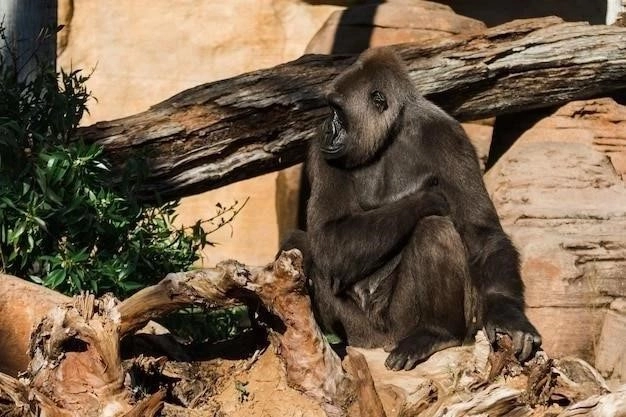The Tasmanian Devil: A Comprehensive Overview
The Tasmanian devil (Sarcophilus harrisii), the world’s largest carnivorous marsupial, faces an ongoing struggle for survival. Once widespread in mainland Australia, they are now confined to the island of Tasmania. This comprehensive overview delves into the Tasmanian devil’s distribution, the threats it faces, and the conservation efforts underway to secure its future.
Distribution and Habitat
The Tasmanian devil, once a common sight across mainland Australia, is now restricted to the island state of Tasmania. Fossil records indicate their historical presence across the Australian mainland, but their extinction there, believed to be around 400 years ago, is attributed to factors like competition with dingoes and environmental changes.
Within Tasmania, Tasmanian devils occupy a diverse range of habitats. They demonstrate adaptability to a variety of environments, including coastal scrublands, eucalyptus forests, and even agricultural areas. Their preference leans towards dry forests and coastal woodlands, areas that offer suitable shelter and access to food sources.

Devils are generally solitary and nomadic creatures, moving across their home ranges, which can vary in size depending on the availability of food. These home ranges often overlap, facilitating interactions between individuals. Their nocturnal habits are evident in their use of dens during the day, seeking refuge in burrows, hollow logs, or dense vegetation.
The Tasmanian devil’s current distribution highlights its vulnerability as an island-bound species. Its confinement to Tasmania underscores the need for focused conservation efforts within the island’s unique ecological context. Understanding their habitat preferences and the factors influencing their distribution within Tasmania is crucial for effective conservation strategies.

Threats to Survival: Devil Facial Tumor Disease (DFTD)
The Tasmanian devil faces a significant threat to its survival in the form of Devil Facial Tumor Disease (DFTD). First observed in 1996, DFTD is a transmissible cancer, one of only two known contagious cancers in the world, that has ravaged wild Tasmanian devil populations. This aggressive disease is characterized by the appearance of tumors on the face and mouth, interfering with feeding, leading to starvation, and ultimately death.
DFTD is transmitted between devils through biting, a common behavior during social interactions and mating. The cancer cells themselves are the infectious agent, spreading from one individual to another. The disease has a near 100% mortality rate, with affected devils typically succumbing within months of developing tumors.
The impact of DFTD on Tasmanian devil populations has been devastating. Since its emergence, it has caused significant declines in devil numbers, estimated at over 60% in some areas. The disease’s rapid spread and high mortality rate have pushed the species towards endangered status and raised concerns about its long-term viability in the wild.
The emergence and spread of DFTD highlight the vulnerability of the Tasmanian devil, particularly as an island-bound species with limited genetic diversity. The disease’s impact underscores the critical need for research to understand its transmission, develop potential treatments or vaccines, and implement effective conservation strategies to mitigate its impact on wild populations.
Conservation Efforts and Strategies

The plight of the Tasmanian devil, driven to endangered status by Devil Facial Tumor Disease (DFTD) and other threats, has spurred a multifaceted conservation response. Recognizing the urgency, various stakeholders, including government agencies, research institutions, and conservation organizations, have mobilized to protect the species and secure its future.
A cornerstone of these efforts is the Save the Tasmanian Devil Program (STDP), a collaborative initiative launched in 2003. The STDP operates on multiple fronts, encompassing research into DFTD, management of wild devil populations, and the establishment of insurance populations. Research focuses on understanding the disease’s transmission, developing potential vaccines or treatments, and identifying disease-free devils.

Managing wild populations involves monitoring disease prevalence, mitigating threats like habitat loss and vehicle collisions, and implementing measures to reduce disease transmission. This includes establishing isolated populations of healthy devils and trialing interventions to boost natural immunity.

The creation of insurance populations involves breeding devils in captivity, both in zoos and dedicated facilities, to safeguard against the extinction of the species. These captive-bred devils serve as a reservoir of genetic diversity and could potentially be reintroduced to the wild if DFTD were to be eradicated or managed effectively.
Public awareness campaigns are also vital, promoting responsible driving in devil habitat areas and fostering understanding of the threats these animals face. These efforts, while ongoing, offer hope for the Tasmanian devil’s long-term survival.
The Role of Captive Breeding Programs
Captive breeding programs have emerged as a critical conservation tool in the fight to save the Tasmanian devil from extinction. These programs, operating in zoos and specialized wildlife facilities, play a multifaceted role in ensuring the species’ survival in the face of threats like Devil Facial Tumor Disease (DFTD).
A primary objective of captive breeding is to establish and maintain insurance populations of healthy devils, safeguarding against the loss of genetic diversity and providing a source of individuals for potential future reintroductions into the wild. These programs carefully manage breeding pairs, aiming to maximize genetic representation and minimize the risk of inbreeding.

Beyond their role as a genetic reservoir, captive breeding programs contribute to research efforts aimed at understanding and combating DFTD. The controlled environment allows for detailed studies of the disease’s progression, the devil’s immune response, and potential treatments or vaccines. Captive devils also serve as candidates for trialing these interventions.
Furthermore, captive breeding programs contribute to raising awareness about the plight of Tasmanian devils and the broader importance of conservation. Zoos and wildlife sanctuaries play a crucial role in educating the public about these unique creatures, the threats they face, and the efforts underway to protect them.
While not a standalone solution, captive breeding programs serve as a vital component of a comprehensive conservation strategy for the Tasmanian devil. They offer a beacon of hope, ensuring the species’ survival while research continues and conservation efforts in the wild strive to mitigate the impact of DFTD.











